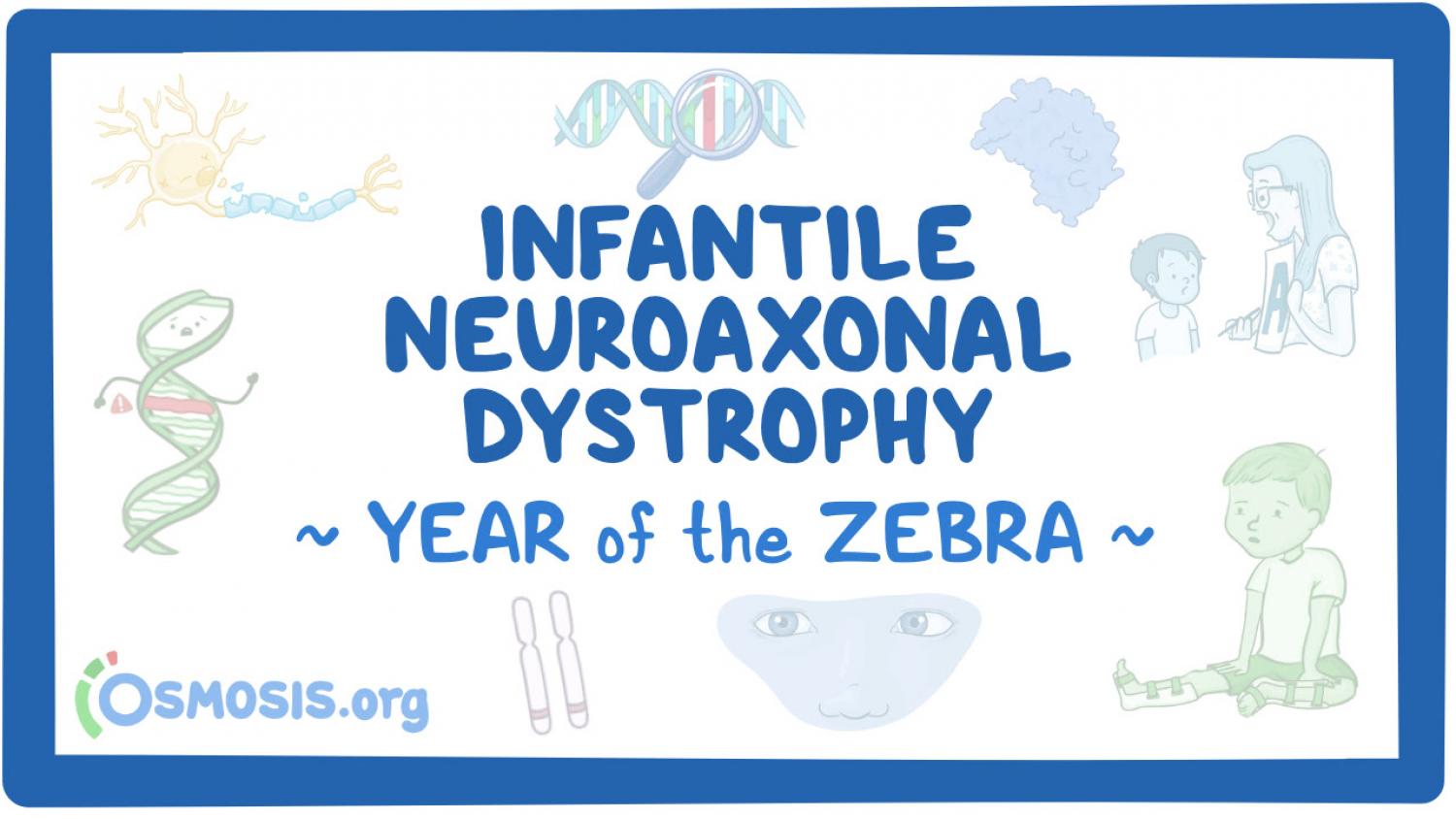
Rare Disease Education: Infantile Neuroaxonal Dystrophy
Editor: Kelsey LaFayette, DNP, RN, FNP-C
"When you hear hoofbeats, think of horses, not zebras,” is a common saying in medical education that means you should think of common conditions first, instead of rare ones, in making a diagnosis. “Rare” is a relative term though and about 7,000 rare, or "zebra," conditions affect more than 350 million individuals worldwide. Although these conditions collectively affect an enormous number of people, each of these conditions individually is rare enough that it can be difficult to secure the resources to study them and to develop treatments and cures. Likewise, awareness of rare conditions may be low and health care professionals may not be familiar with their signs and symptoms making it more difficult to reach a correct diagnosis and provide effective treatments.
To increase knowledge about rare conditions, Osmosis and the National Organization for Rare Diseases (NORD) have collaborated on an initiative to bring education and awareness to the public. We are excited to be a part of this initiative because we believe everyone deserves quality health care, no matter how rare their condition.
Zebra of the Week: Infantile Neuroaxonal Dystrophy
Electrical wiring is an integral part of any machine’s circuitry. It is usually a complex system that allows for the transfer of information, energy, and more. Any damage to the individual wires will affect the correct functioning of the whole. In the human body, this wiring is best represented by the nervous system and the nerves can be likened to the individual wires whose malfunctioning will have repercussions on everyday life. One example of such malfunctioning happens in infantile neuroaxonal dystrophy, this week’s zebra.
Infantile neuroaxonal dystrophy (INAD) is an ultra-rare, inherited degenerative disorder of the nervous system. It is caused by changes in the PLA2G6 gene, which contains the body’s instruction for making the enzyme phospholipase A2, whose function is to break down certain lipids. Impaired breakdown of lipids is thought to result in the excess accumulation of cell membranes in the nerves, resulting in the symptoms of INAD.
These symptoms usually start to appear between the ages of 3 months and 3 years. A common pattern is the slowing of children’s development, followed by loss of acquired skills (such as the ability to sit or stand), and progression of symptoms such as loss of muscle control, speech problems, difficulty swallowing, and more depending on the subtype of the disease.
INAD is estimated to occur in 1 to 2 children per million globally.
To learn more about the diagnosis and treatment of infantile neuroaxonal dystrophy, watch the dedicated Osmosis video on YouTube and Osmosis.org
Meet Amelia
Up until she was 2 years old, Amelia was growing up inconspicuously, babbling, crawling, and showing little signs of what is to come. Then, the progress she had made until that point started to unravel and she progressively regressed. It was a long journey before she was diagnosed with INAD and became the first documented INAD patient in Singapore. Watch Amelia’s sister Amanda as she recounts the memories shared and how she wants to make the rest of the days with her count.
Organization Taking Strides
The INADcure Foundation is a nonprofit charity whose mission is to support the development of treatments, including a cure, for infantile neuroaxonal dystrophy (INAD).
They tackle this mission on several fronts. For instance, they facilitate communication and collaborations between academia, research institutions, and biotech firms. Then, they take it one step further and provide financial support for the most promising INAD research after review by their scientific medical advisory board. Moreover, the foundation offers resources to families dealing with INAD, from reliable information to inclusion in a community whose experience they can benefit from. Their Superstars page is a platform for sharing the poignant stories of patients with INAD and for them to continue to be a source of inspiration and encouragement. They also encourage involvement through fundraising events, donations, volunteer opportunities, and advocacy efforts.
The INADcure Foundation is part of the Chan Zuckerberg Initiative’s Rare As One Network. Visit their website to learn more.
